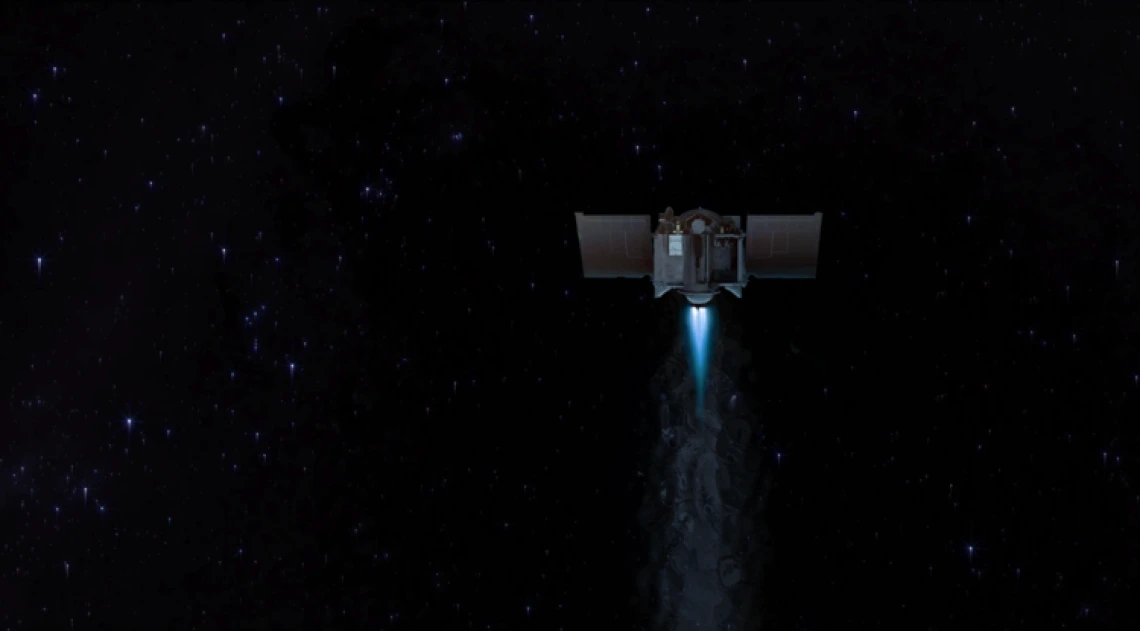UA Research, Expertise Had Global Impact in '16

From unprecedented space exploration initiatives to a deeper understanding of how viruses spread to the socio-economic influence of ramen noodles, University of Arizona researchers found themselves at the forefront of some of the year's most exciting and eye-opening discoveries.
Here are 10 UA-related stories that generated headlines across the globe in 2016:
1. Bound for Bennu! OSIRIS-REx Launch Was 'Perfect,' Sept. 9
OSIRIS-REx is the first U.S. mission to carry samples from an asteroid back to Earth and the largest sample returned from space since the Apollo era. The UA leads the mission science team and observation planning and provided the OSIRIS-REx Camera Suite instrument. (The New York Times, CNN, The Washington Post, BBC, The New Yorker, The Week)
2. Newly Discovered Planet Has Three Suns, July 6
UA graduate student Kevin Wagner identified the first planet ever found in a wide orbit inside a triple-star system. The planet, known as HD 131399Ab, "is one of the few exoplanets that have been directly imaged, and it's the first one in such an interesting dynamical configuration," said study author and UA researcher Dániel Apai. (The Washington Post, National Geographic, Wired)
3. UA's Mall Memorial Makes 'Quiet Statement,' Dec. 5
The USS Arizona Mall Memorial, with its overt and subtle elements, speaks to UA tradition, design and the continuing effort to preserve the memory of 1,177 sailors and Marines killed on the USS Arizona battleship during the 1941 bombing of Pearl Harbor. (CBS Evening News, USA Today, The Arizona Republic)
4. Noodles Supplant Cigarettes as Prison Currency of Choice, Aug. 24
Ramen noodles are supplanting the once-popular cigarettes as a form of currency among state prisoners, but not in response to bans on tobacco products within prison systems. Instead, study author Michael Gibson-Light, a doctoral candidate in the UA School of Sociology, found that inmates are trying to figure out ways to better feed themselves as certain prison services are being defunded. (The Christian Science Monitor, Time, The Washington Post)
5. Findings Show How AIDS Spread Across North America, Oct. 26
A new technique that allowed researchers to analyze genetic material from serum samples of HIV patients taken before AIDS was known provides a glimpse of unprecedented detail into the beginnings of the AIDS epidemic in North America. Michael Worobey, head of the UA's Department of Ecology and Evolutionary Biology, led the research. (NPR, The New York Times, Buzzfeed)
6. Birth Year Can Predict Odds in a Flu Pandemic, Nov. 10
We are not blank slates with regard to how susceptible we are to emerging strains of flu virus, researchers from the UA and UCLA have discovered. The findings could provide information that might be relevant for the development of a universal flu vaccine. Michael Worobey served as a co-author of the study. (CNN, The Atlantic, The Guardian)
7. UA Law School Opens Admissions to GRE Test Takers, Feb. 10
At the UA's James E. Rogers College of Law, students now have an alternative to the LSAT. Applicants can take the Graduate Record Exam, or GRE, instead of the LSAT, making the UA the first law school in the country to offer this option. (The Wall Street Journal, NPR, Inside Higher Ed)
8. Cracked, Frozen and Tipped Over: New Clues From Pluto's Past, Nov. 16
Research by two UA planetary scientists reveals fascinating clues about Pluto, suggesting the small world at the fringes of our solar system is much more active than anyone ever imagined. (The New York Times, The Washington Post, BBC)
9. Runners' Brains May Have More Connectivity, UA Research Shows, Dec. 14
Researchers at the UA found that running is intellectually demanding and could affect thinking patterns in people who run — even when they are not running. (The New York Times, New York Magazine, Runner's World)
10. The Wasp That Delivers 'Instantaneous, Debilitating Pain,' June 27
"Ouch!" has never sounded so authoritative. Out of the mouth of UA entomologist Justin Schmidt, it takes on a whole new meaning. In his recent book, "The Sting of the Wild," Schmidt ranks different insect stings in order to determine the toxicity and pain of each bite. (National Geographic, NPR Science Friday, The New York Times)

